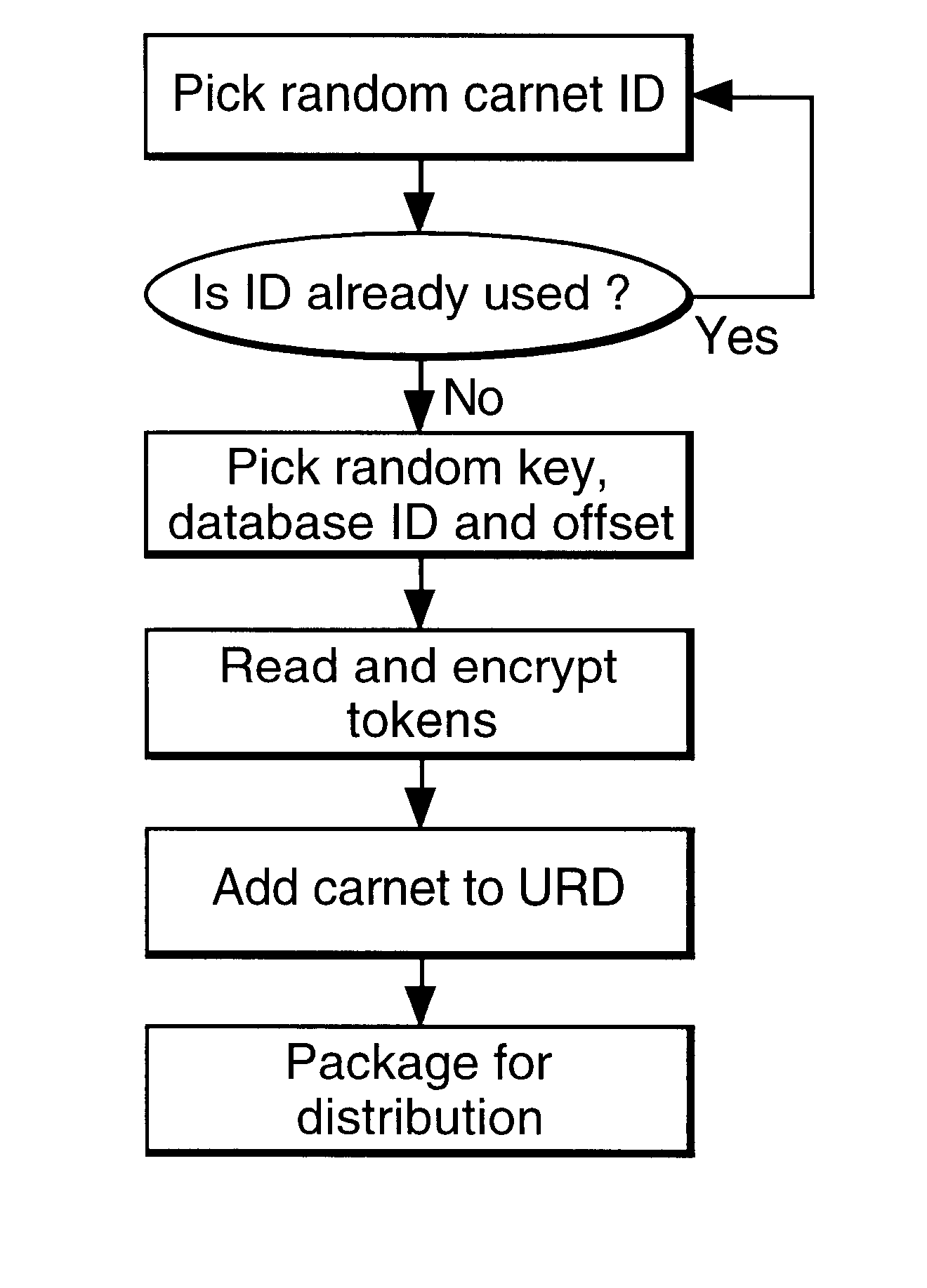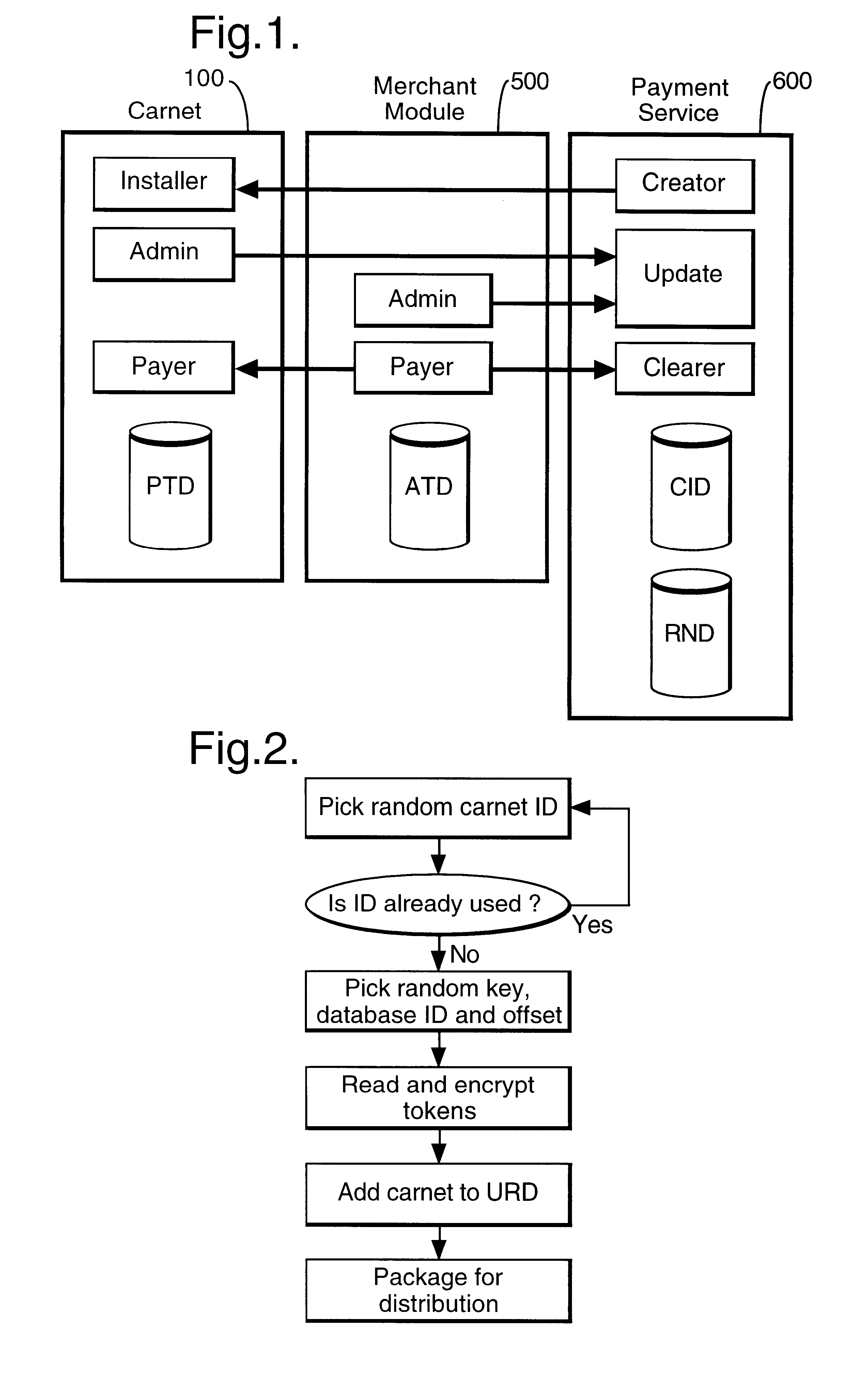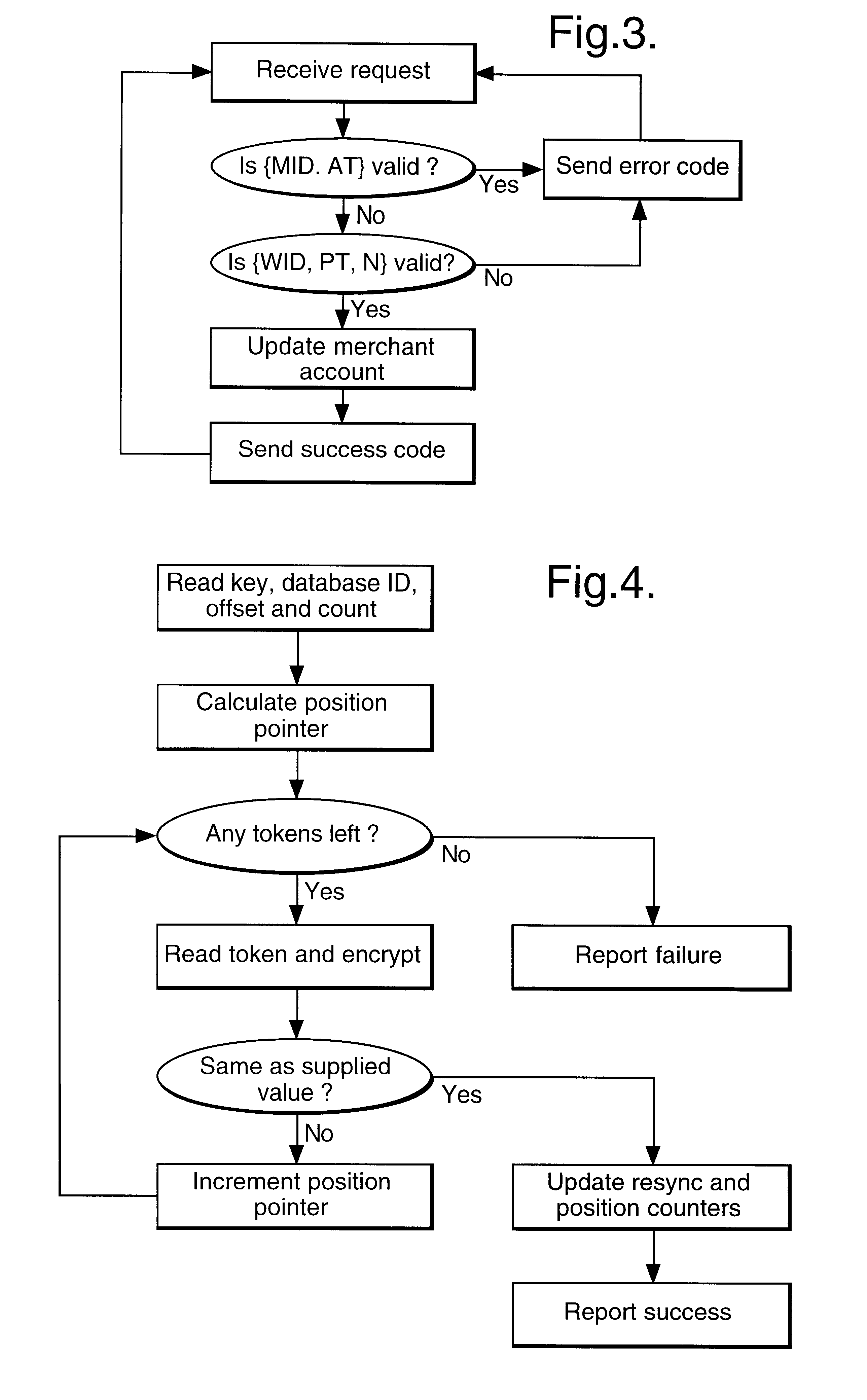Transaction system
- Summary
- Abstract
- Description
- Claims
- Application Information
AI Technical Summary
Benefits of technology
Problems solved by technology
Method used
Image
Examples
Embodiment Construction
As shown in FIG. 8, a client terminal 1, which in this example is a personal computer, is connected via a modem 2 and the PSTN (public switched telephone network) 3 to an Internet Service Provider (ISP) 4. Via the internet, the client terminal forms, at different times, connections to a payment server 6 (also termed herein the "payment service") and to an on-line merchant 5. The merchant offers a service in return for payment. For example, the merchant may serve HTTP (hypertext transfer protocol) pages of personalised news items at a low, fixed charge per page. Alternatively, the merchant may, for example, control a node 5a which provides access to a high-speed internet connection. Access to the node is made available to the user at a charge which may be calculated, for example, on the basis of the length of time for which the user is connected. Payment tokens may be requested from the user at regular intervals, or a payment token may be collected from each packet which passes throu...
PUM
 Login to View More
Login to View More Abstract
Description
Claims
Application Information
 Login to View More
Login to View More - R&D
- Intellectual Property
- Life Sciences
- Materials
- Tech Scout
- Unparalleled Data Quality
- Higher Quality Content
- 60% Fewer Hallucinations
Browse by: Latest US Patents, China's latest patents, Technical Efficacy Thesaurus, Application Domain, Technology Topic, Popular Technical Reports.
© 2025 PatSnap. All rights reserved.Legal|Privacy policy|Modern Slavery Act Transparency Statement|Sitemap|About US| Contact US: help@patsnap.com



